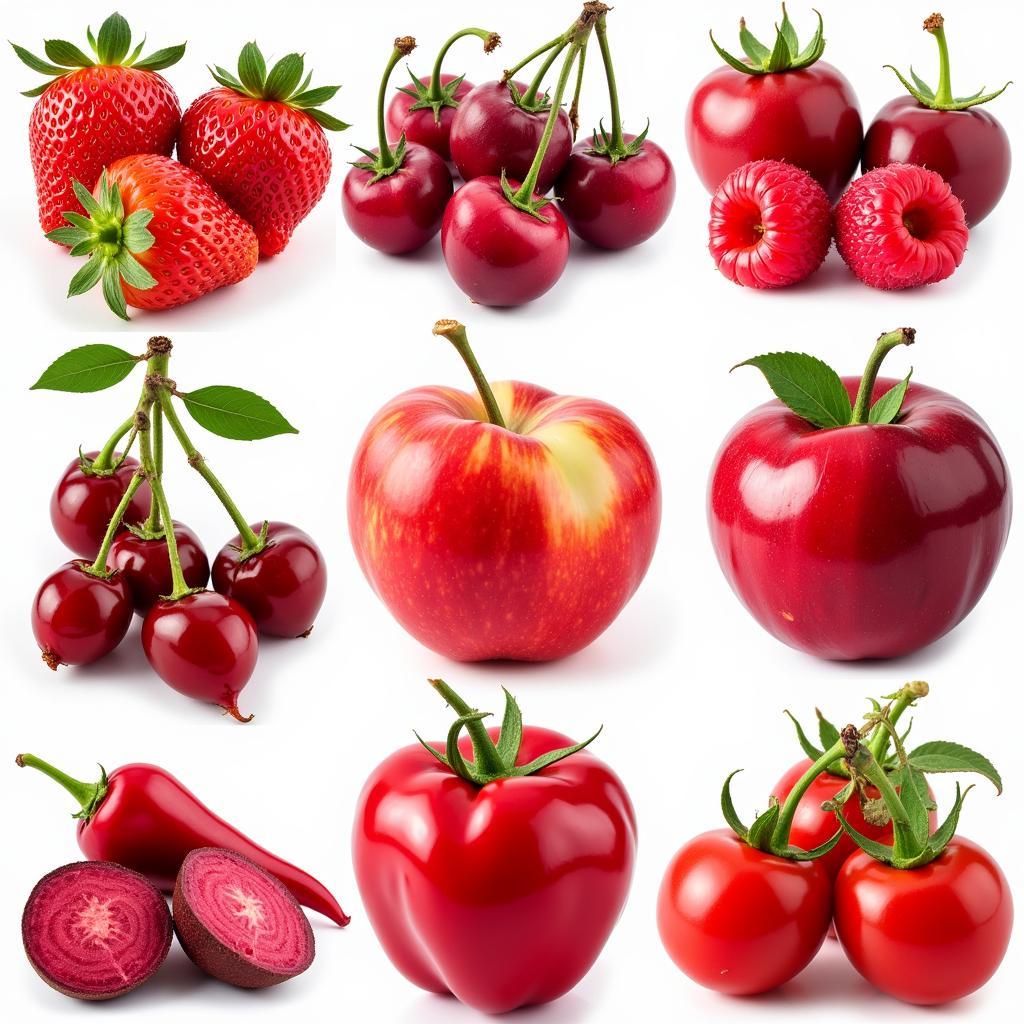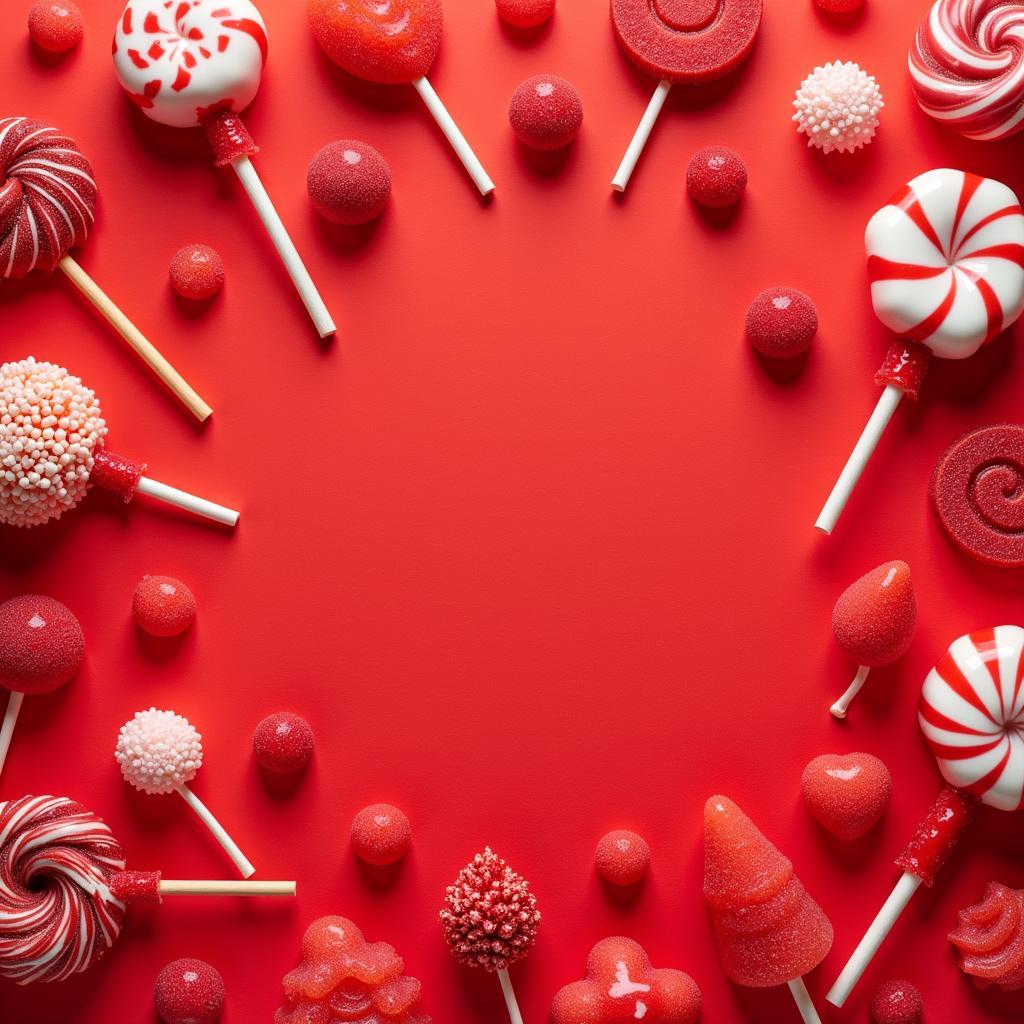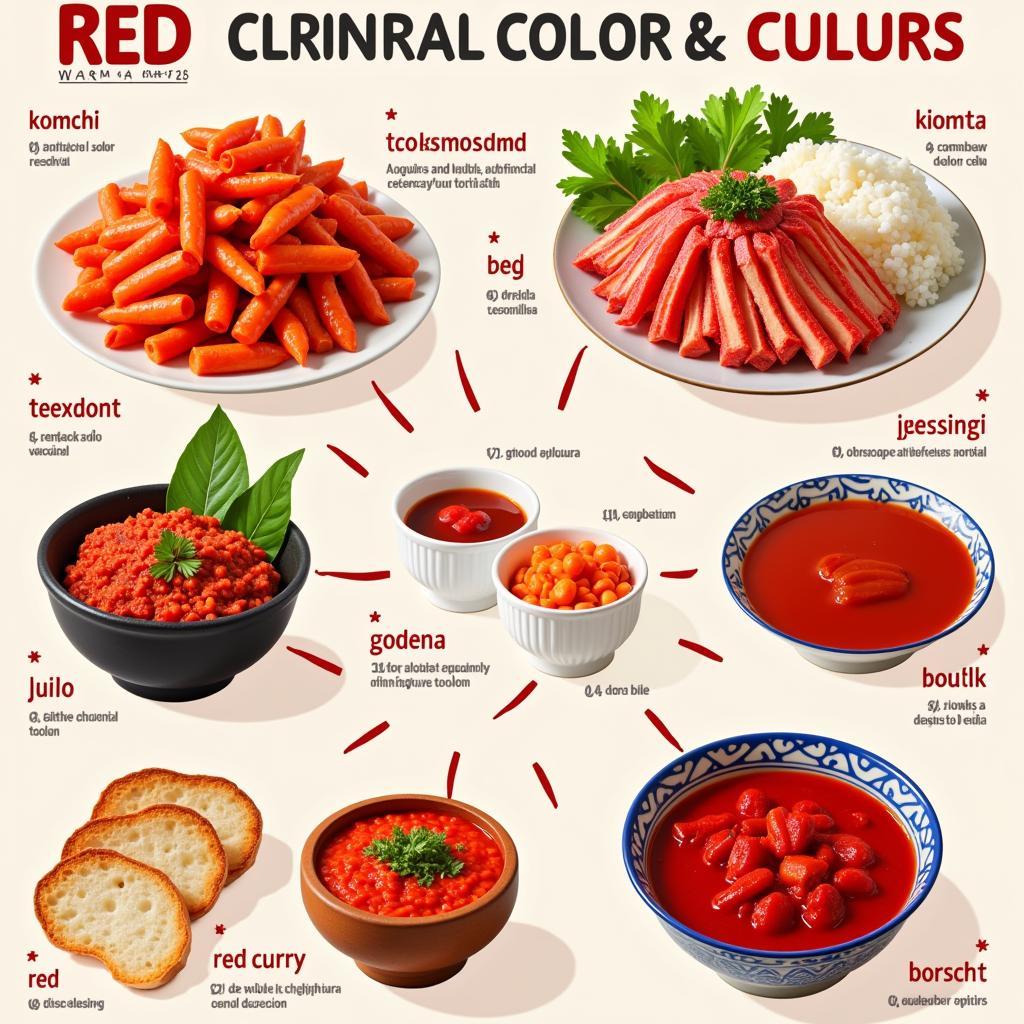Have you ever wondered, “What does the color red taste like?” It’s a strange question, seemingly nonsensical. After all, colors are visual, and taste is gustatory. Yet, the human experience is a tapestry of interwoven senses, and the connections between them can be surprisingly intricate. While red doesn’t have a literal taste in the way a strawberry does, it evokes powerful associations that influence our perception of flavor. Let’s explore this fascinating intersection of sight and taste.
 Red Foods: Fruits and Vegetables
Red Foods: Fruits and Vegetables
The Psychology of Color and Taste
Color plays a crucial role in how we experience food. Think about it: Would a blue steak be as appetizing? Probably not. Our brains are wired to associate certain colors with particular tastes. Red, for example, is often linked to sweetness, due to its prevalence in naturally sweet fruits like cherries and strawberries. This connection can influence our expectations and even alter our perception of flavor. A study found that red-colored drinks were perceived as sweeter than their clear counterparts, even when the sugar content was identical.
Choosing the right color for your home can significantly impact your mood and well-being. If you’re looking for guidance on selecting hardwood floor color, check out our helpful guide: how to select hardwood floor color.
What Red Represents in Food
Red signifies more than just sweetness. It can also evoke feelings of excitement, energy, and passion. Think of the vibrant red of a spicy chili pepper or the deep crimson of a glass of red wine. These associations contribute to the perceived “taste” of red, adding layers of complexity beyond simple sweetness.
Red and Sweetness
The association of red with sweetness is deeply ingrained in our cultural and biological understanding. From the ripe redness of berries signaling their readiness to eat, to the bright red packaging of many candy brands, we’ve learned to equate red with sugary treats. This learned association has a powerful impact on our perception of flavor.
 Red Candy and Sweet Treats
Red Candy and Sweet Treats
Red and Spice
Red can also indicate spiciness. The fiery hues of chili peppers and hot sauces warn us of their potential heat. This visual cue prepares our palates for the intense sensation to come.
“Red, in the context of food, speaks to our primal instincts. It signifies ripeness, energy, and even danger. This complex interplay of associations contributes to the unique ‘taste’ of red,” says renowned food psychologist Dr. Anya Sharma.
Does Red Taste Different in Different Cultures?
Cultural context also influences the perceived “taste” of red. In some cultures, red is associated with good luck and prosperity, further enhancing its positive connotations in food. In others, it might represent different emotions or concepts, leading to different flavor associations.
If you’re curious about other color associations, you might wonder, “What color is sangria?”. Find out more here: what color is sangria.
 Cultural Variations of Red Food
Cultural Variations of Red Food
What Does the Color Red Taste Like: FAQ
- Does red actually have a taste? No, red is a color and does not have a literal taste. However, it evokes strong associations that influence our perception of flavor.
- Why is red associated with sweetness? This association likely stems from the prevalence of red in naturally sweet fruits like strawberries and cherries.
- Can color affect how sweet something tastes? Yes, studies have shown that color can influence our perception of taste, with red often making things seem sweeter.
- What other flavors are associated with red? Besides sweetness, red can also be associated with spiciness and other intense flavors.
- Does the “taste” of red vary across cultures? Yes, cultural context can influence the perceived “taste” of red and its associated flavors.
6.. What color is a banana? Find out here: what color is a banana - What is splat hair color? Discover more here: what is splat hair color
Conclusion
So, what does the color red taste like? While it doesn’t have a tangible taste, red evokes a complex interplay of associations, often linked to sweetness, spiciness, and excitement. This interplay, combined with cultural influences, shapes our perception of flavor and contributes to the unique “taste” of red. Understanding this connection can enhance our appreciation for the multi-sensory experience of food.
Remember, the world of color is fascinating, and exploring its relationship with our senses can lead to surprising discoveries. Just as we explored the question “what does the color red taste like”, we can also delve into other intriguing questions, such as “what color should coconut water be?”: what color should coconut water be.
If you need any assistance with color selection or design, please contact us at Phone Number: 0373298888, Email: [email protected] or visit our address: 86 Cau Giay, Hanoi. We have a 24/7 customer service team ready to help.